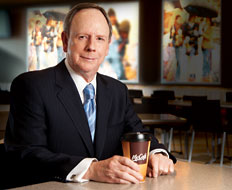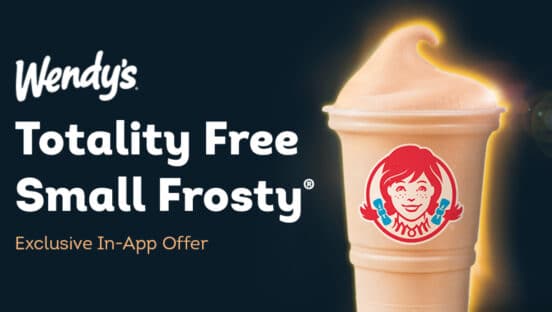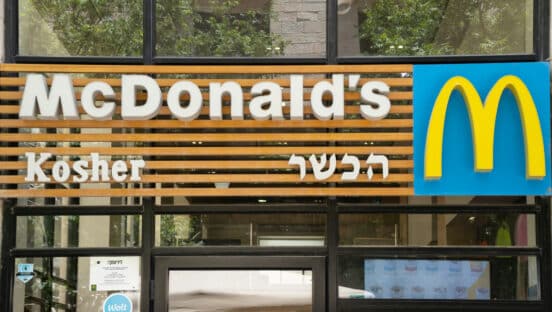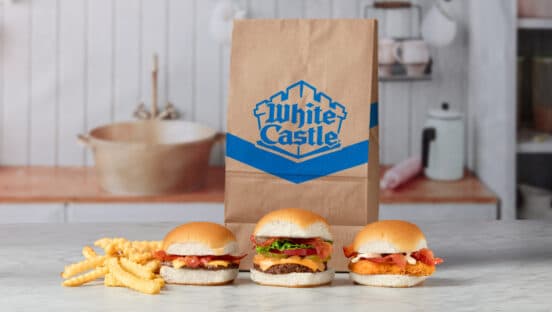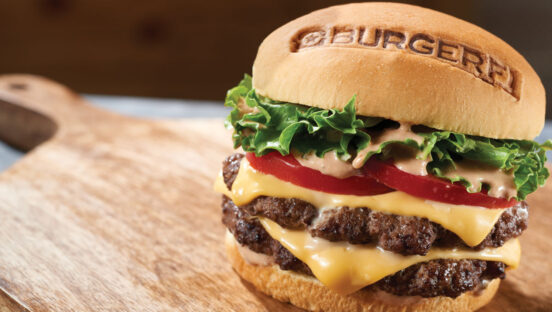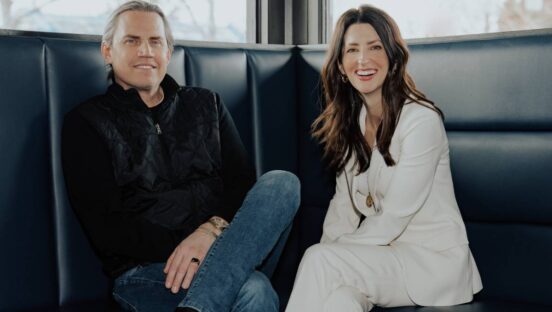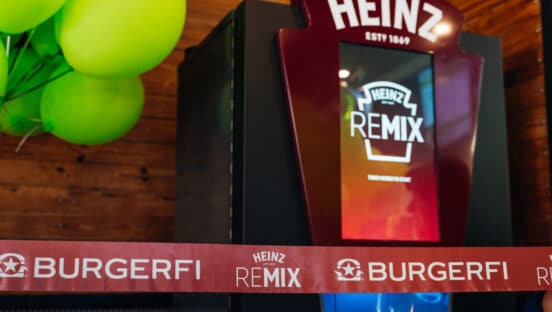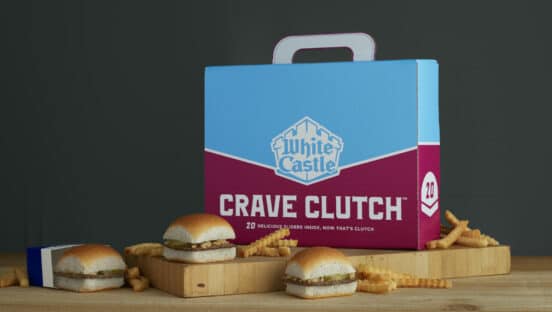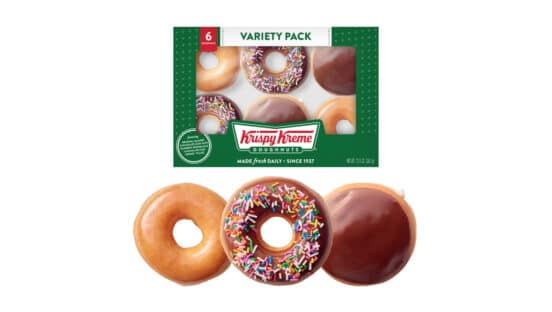When a poster of McDonald’s Plan to Win was taken off a wall in corporate headquarters for a freshening-up, chief executive Jim Skinner personally intervened to get the strategy statement back in place ASAP.
“I told people, never, ever take the Plan to Win down and leave it down—do whatever it takes to replace it,” Skinner says. “People might see that and think, ‘Oh, Plan to Win’s down. There must be a change strategically.’”
A change in direction may well be the last thing wanted by McDonald’s management, stockholders, loyal franchisees, suppliers, and perhaps even customers. Studies have shown that Ronald McDonald is nearly as well known as Santa Claus. Awareness of the brand’s dominance in the U.S. restaurant market may be even higher.
McDonald’s U.S. sales topped $30 billion last year, outstripping the next-closest competitor, Subway, by $20 billion. If Subway were suddenly to merge with Burger King and Starbucks, McDonald’s would still rank No. 1 on QSR’s annual QSR 50 rankings, by a margin nearly equaling the systemwide sales of Dairy Queen.
Skinner recently observed to investors that McDonald’s captured 11.3 percent of the “informal eating out market,” or more than $1.10 of every $10 that’s spent in a limited-service establishment. But the real poke in the eye for competitors is a sense that the brand is unstoppable, even by the Great Recession.
U.S. comparable store sales increased in 2008 and ’09, as they had for the five years before. The gains of 4 percent and 2.6 percent, respectively, came as overall industry sales were in significant decline. The biggest, some muttered, was getting even better at outperforming everyone else.
“They deserve a lot of credit in a very tough environment,” says Mark Kalinowski, an analyst who tracks McDonald’s and a number of other quick-service chains for Janney Montgomery Scott in New York City. “Out of all the national and the big regional chains, McDonald’s is putting up the best numbers of any of them.”
The underlying factor, according to Skinner, is the Plan to Win, the credo that was implemented seven years ago after a rare and nearly disastrous period of drift for the chain. At its heart are the general areas of focus known in every nook and cranny of the organization as the Five P’s—People, Products, Place, Price, and Promotion. Also stated are such goals as serving more customers more often in ways that enhance brand loyalty and profitability.
The Plan was conceived as a way of governing the strategy to keep Brand McDonald’s on course regardless of how the business climate or marketplace might shift. Efforts to improve the business would be guard-railed within the Five P’s, as would investment. In that way, McDonald’s bet, the system would stay fixated on better serving customers and improving operations, with only the how’s left as variables.
Skinner acknowledges the content of the Plan is less important than its role as a touchstone for an enormous, multifaceted company with diverse operations around the globe. Every team in every market in every nation has its own adaptation of the Plan, setting out its responsibilities in what rolls up into one grand strategy, hopefully aligning everyone from crewmembers to Skinner himself.
“We use the Plan to Win to set up our business plan for each of our units, so it goes all the way down to the individual restaurant,” says Susan Chrisman, a six-store franchisee in Louisiana.
“We could have put any nine things up there—‘Best place to eat, drink,’ whatever the platitudes,” Skinner says during an interview with QSR at McDonald’s Oak Brook, Illinois, headquarters. The “key to the enlightenment of the organization” was “the focus on the customer and the restaurants, and the absolutely relentless focus on improving existing restaurants.”
The results are plainly reflected in McDonald’s standout financial results, Kalinowski says. “Their marketing is working (read Promotion and Products), they’re offering value (those P’s again, plus Price), and they’re executing well at the restaurant level.”
But what do the P’s foretell for the future? As Kalinowski says, “It’s always a struggle to remain relevant to the consumer.”
Skinner stresses that the Plan isn’t some Ouija board that indicates operators should add a new Snack Wrap today and flat-screen TVs next month. Rather, he asserts, it ensures the organization will spot the next big thing because it keeps the focus on customers and what they want.
“One of my big concerns for the organization, when it sort of thought the business was rocket science, was, could we get back to where we’d realize it was not rocket science?” Skinner says. “We didn’t need a lot of people with intellectual fiber to figure out that faster service, hotter food, greater value, in a relevant environment that our customers loved and wanted to come back to, is the answer to any question you have about the restaurant business.”[pagebreak]
Yet at McDonald’s level of performance, even simple issues like serving speed or order accuracy can entail considerable sophistication, at costs not exactly at the “aw, shucks” level, either. The chain is being reminded of that now with the planned roll out of a next-generation point-of-sale system.
The new registers will use images on the keyboard to designate items in their various forms. Instead of hunting for three keys to indicate the customer wants a smoothie in a certain flavor and size, the crewmember would hit a single key bearing a depiction of that precise order.
The format promises to cut service times, boost order accuracy, and allow stores to handle more customers during crunch periods. In the paradigm of Plan to Win, it looks like a slam dunk in the People area, improving the experiences of harried crewmembers, hurried customers, and multitasking managers. Operations enhanced? Customer experience improved? Check and check.
But some franchisees aren’t lovin’ it, says Dick Adams, a frequent critic and former franchisee of McDonald’s who now works as a franchise-relations consultant.
“They just installed a new POS system in 1999,” Adams says. The cost of replacing that technology, after investing six figures per store to provide the McCafé beverages lineup, has many franchisees grousing about their cash flow, he says.
It’s not that the owner-operators object to the Plan to Win or the focus it’s yielded, Adams says. “I can’t say they’re unhappy because they’ve enjoyed six years of sales increases,” but “they don’t feel as if they’ve shared in those increases in terms of profits or cash flow.”
And, he adds, those capital-intensive initiatives came in an environment where tighter consumer spending was already dampening profits.
Besides being upset by the new technology investment, they’re not turning cartwheels about the new breakfast Dollar Menu, either, Adams says. “It’s still early, but there’s a feeling you’re discounting to the same customer you’d get anyway,” he says.
Skinner allows that the breakfast bargains are likely to increase the percentage of transactions involving a deal, a proportion that virtually hadn’t changed while a Dollar Menu was offered only at lunch and dinner. But he stresses the need for McDonald’s to boost traffic as well as sales at breakfast, a meal it’s dominated by pulling market share from everyone else.
And he insists there’s no opposition from franchisees to the new morning array or any of the other major initiatives that have been undertaken as part of the Plan.
That includes McDonald’s ambitious, multistage beverage program, which progressed beyond the McCafé coffee phase to the introduction of frappés and smoothies. Sure, there’s been a lot of press about dissension in the ranks, but some reporters just like to “pick off” a disgruntled franchisee here or there, Skinner says.
“Any time you’re embarking on a billion-dollar project and implementing something in 14,000 stores, 85 percent of them managed by franchisees, you’re going to have a difference of opinion on how to implement that,” he says.
But “I’ve never had any one of them call me and say, ‘Jim, we’re going the wrong way, we have all kinds of crises,’” Skinner says. “Cash flow is at an all-time high here in the U.S. We’ve always had a good relationship with our franchisees, but it’s always better when the results are better.”
“There’s plenty of debate leading into a decision,” says Don Armstrong, a 13-unit franchisee in Portland, Oregon, and chairman of the National Leadership Council (NLC), McDonald’s franchisee advisory group. “But once the decision is made, there’s no more need for debate.”
The new POS system, the breakfast Dollar Menu, the beverage program—Armstrong says he favors them all, as does the NLC.
“It’s always tough to make investments in difficult times,” he says. “It would’ve been easier for us to have suspended the McCafé roll out because of the bad economy. But because we didn’t, now we can operate from a position of strength.”
With an investment on the scale of the POS changeover, “it’s never easy, but you do it because it’s the right thing,” Armstrong says. “It’s pretty much understood in the field that our technology needed to be upgraded.”
Chrisman says she volunteered her units as test sites and the new system is working “beautifully.” She says it’s been particularly appreciated by the crewmembers because it makes their tasks easier.[pagebreak]
Technology can be a tougher investment to swallow because of the delayed gratification, says Jan Fields, the newly appointed president and chief executive of McDonald’s USA. “Unlike with a new product, you don’t see an immediate return on it,” she says.
With the new POS system, “yes, it’s an investment,” Fields says. But “technology today does not last as long as it once did. We have to take advantage of what becomes available. It helps us in accuracy. And for every 10 seconds we can shave off our transactions, we can handle 15 more cars through the drive thru an hour.”
U.S. operations are also seeking to boost the accuracy of drive-thru orders by enhancing the clarity of the speakers that order takers use to communicate with customers.
She echoes Skinner’s assessment that franchisee resistance to the initiatives developed under the Plan to Win has been “grossly overstated.” With the beverage program, for instance, “They’re pulling frappes and smoothies onto their menus like nothing we’ve experienced before,” she says.
The cold whipped drinks are the last phase in the program’s roll out, which followed the introduction of new hot and cold coffees and espresso-based drinks. The systemwide addition of the treats is scheduled to be completed before the summer.
As for the new breakfast Dollar Menu, Fields says, “It was passed with 97 percent of the system approving it. How much dissention could there have been?”
Not enough sales data exists yet on the new bargain array, according to Fields, who spoke with QSR days after the roll out. But “it’s certainly increasing traffic into the restaurants.”
True to the overriding aim of Plan to Win, Fields says, the new value menu is more of a unification of systemwide efforts than a new price-cutting program hatched by the home office. Virtually all U.S. stores were offering a bargain at breakfast in one form or another, she says. “We just got them all focused on the same one.”
“The key drivers of our system, we have to stay focused on them, to continue working on each of those items because we haven’t realized their full potential yet,” Fields says of the latest initiatives launched under the Plan to Win. “My goal is to keep it going.”
Skinner would not say what specific undertakings might follow the beverages, morning Dollar Menu, and POS roll outs.
“I even get that question from the board, ‘What’s the next big thing?’” says Skinner, who also serves as the vice chairman of McDonald’s Corp. “I have no idea. But I do know our protocol will bring us to the right consumer insights at the right time and the choices for innovation.”
He strongly indicated it wouldn’t be the six-second scrambled eggs a visitor would find in the Menu Innovations Center on the day of the interview. Enhancing drive-thru operations, the source of 65 percent of McDonald’s sales, is a higher priority, he says.
Because of McDonald’s position of strength, Skinner says, it will put more emphasis on areas where many chains have slashed their budgets. For instance, “training and educating our people, we’re ramping up our efforts around that,” he says.
More attention will also be paid to staffing. “We’re one of the fortunate companies today that can hire, and continue to hire, not just because we’ve opened new restaurants but because we’ve been successful.”
Similarly, McDonald’s is raising its capital expenditure budget by $300 million, to $2.4 billion, for 2010. Part of that is earmarked for opening 1,000 new restaurants, with much of the remainder used to redesign some 500 U.S. units (2,300 globally), the continuation of a project begun five years ago to keep a contemporary look in stores. “People ask, ‘When are you going to be done?’ We’ll never be done with our reimaging,” Skinner says.
One of the things that won’t change, he stresses, is the Plan to Win. “The opportunity to strategize through the Five P’s is infinite, the continuum of trying to do a better job for your customers.
“I’m a stickler for consistency and staying the course,” Skinner says. “One of our values is staying focused on continuous improvement. It’s easy to throw a bunch of bricks and mortar at a bunch of countries. The hard part is trying to get existing restaurants to be better, all the way from relevant reimaging to executing at the counter.
“I used to take it personally when someone says, ‘Well, they’re the industry leaders now, but will it last?’ We don’t hear that too much anymore.”

